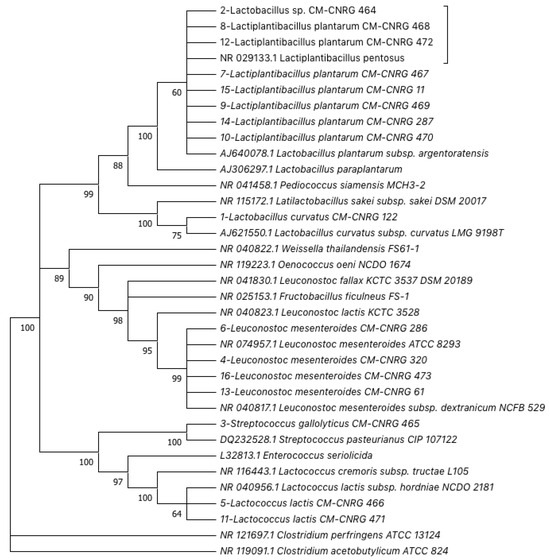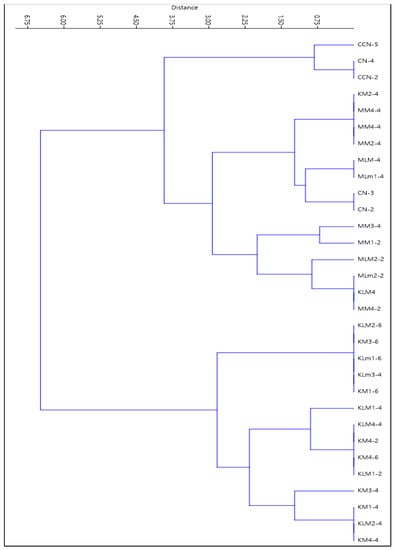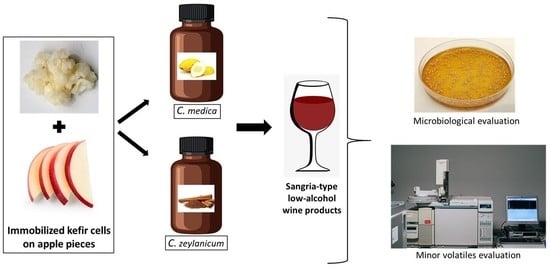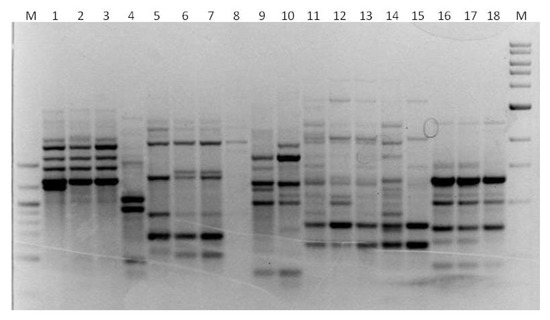Microbiology and Technology of Fermented Foods
Share This Topical Collection
Editor
 Prof. Dr. Salam A. Ibrahim
Prof. Dr. Salam A. Ibrahim
 Prof. Dr. Salam A. Ibrahim
Prof. Dr. Salam A. Ibrahim
E-Mail
Website
Collection Editor
Food and Nutritional Sciences Program, North Carolina A&T State University, Greensboro, NC 27411-1064, USA
Interests: food microbiology; food safety; food fermentation; lactic acid bacteria; dairy food technologyfunctional foods; probiotics; prebiotics; organic acid production; spoilage microbes; fermented beverages; bioconversion process; rapid methods for detection foodborne pathogens
Special Issues, Collections and Topics in MDPI journals
Topical Collection Information
Dear Colleagues,
Food fermentation is one aspect of food processing that uses microorganisms’ metabolic activity and growth for the stabilization of perishable agricultural produce. This technology has also progressed beyond food preservation into a tool for creating suitable organoleptic, nutritional, and functional attributes in food products. Fermented food constitutes a significant portion of our diet. Therefore, there is a growing interest in fermented food products due to their health benefits. With recent advancements in science, especially with the use of molecular approaches, new techniques can be applied to fermentation technology. In this Topical Collection, we would like to invite scientists to submit research manuscripts, notes, reviews, mini reviews, opinions, laboratory instructions (teaching tools), and short notices related to innovative research and techniques applied to food fermentation technology. This Topical Collection is a wonderful opportunity for us to share our knowledge, experience, and expertise with a broader audience. Thank you so much for your interest and support.
Prof. Dr. Salam A. Ibrahim
Collection Editor
Manuscript Submission Information
Manuscripts should be submitted online at www.mdpi.com by registering and logging in to this website. Once you are registered, click here to go to the submission form. Manuscripts can be submitted until the deadline. All submissions that pass pre-check are peer-reviewed. Accepted papers will be published continuously in the journal (as soon as accepted) and will be listed together on the collection website. Research articles, review articles as well as short communications are invited. For planned papers, a title and short abstract (about 100 words) can be sent to the Editorial Office for announcement on this website.
Submitted manuscripts should not have been published previously, nor be under consideration for publication elsewhere (except conference proceedings papers). All manuscripts are thoroughly refereed through a single-blind peer-review process. A guide for authors and other relevant information for submission of manuscripts is available on the Instructions for Authors page. Microbiology Research is an international peer-reviewed open access quarterly journal published by MDPI.
Please visit the Instructions for Authors page before submitting a manuscript.
The Article Processing Charge (APC) for publication in this open access journal is 1600 CHF (Swiss Francs).
Submitted papers should be well formatted and use good English. Authors may use MDPI's
English editing service prior to publication or during author revisions.
Keywords
- food fermentation
- biotechnology
- bioprocess
- lactic acid bacteria
Published Papers (6 papers)
Open AccessArticle
Identification, Viability, and Membrane Potential during the Cryopreservation of Autochthonous Lactic-Acid Bacteria Isolated from Artisanal Adobera Cheese from Los Altos de Jalisco
by
Ramón Ignacio Arteaga-Garibay, Raúl Jacobo Delgado-Macuil, Lorena Jacqueline Gómez-Godínez, Carlos Iván Cruz-Cárdenas, Zuamí Villagrán, Silvia Giono-Cerezo, Lily Xochitl Zelaya-Molina, Luis Miguel Anaya-Esparza and José Martín Ruvalcaba-Gómez
Viewed by 1073
Abstract
Lactic acid bacteria (LAB) comprise a group of microorganisms responsible for developing the sensory and chemical characteristics of several foods and fermented products, particularly cheese. For this reason, after isolation and identification of LAB, validated protocols and procedures for their long-term preservation without
[...] Read more.
Lactic acid bacteria (LAB) comprise a group of microorganisms responsible for developing the sensory and chemical characteristics of several foods and fermented products, particularly cheese. For this reason, after isolation and identification of LAB, validated protocols and procedures for their long-term preservation without compromising its integrity and technological properties, as well as methodologies aiming to assess their viability and integrity are paramount. This study aimed to isolate and identify autochthonous LAB from artisanal Adobera cheese and determine the effect of LAB cryopreservation with thioglycolate broth and glycerol on their viability, membrane integrity, and kinetics. Sixteen LAB were isolated and genetically identified from artisanal cheese samples; eleven of those strains were selected (genus
Lactobacillus,
Leuconostoc,
Streptococcus, and
Lactococcus) and included in the cryo-preservation assay. The initial average concentration of the bacterial suspensions was 6.89 log
10 CFU mL
−1; increasing to 8.9 log
10 CFU mL
−1 21 days later and slightly reduced at day 42 post-preservation (losses below one logarithm). About 77% of the cells maintained their membrane potential 180 days after their preservation and showed normal Kinetic parameters, maintaining normal adaptation times (Lag phase) and Log phases (9 h average), before reaching the stationary phase. The proposed protocol constitutes a viable alternative to the long-term preservation of different LAB genera because it keeps their viability and integrity. Using flow cytometry allowed the enumeration of viable LAB and provide evidence of the integrity of their membrane.
Full article
►▼
Show Figures
Open AccessArticle
Isolation and Characterization of Lactic Acid Bacteria from Cocoa Mucilage and Meat: Exploring Their Potential as Biopreservatives for Beef
by
Laura Morante-Carriel, Fernando Abasolo, Carlos Bastidas-Caldes, Erwin A. Paz, Rodrigo Huaquipán, Rommy Díaz, Marco Valdes, David Cancino, Néstor Sepúlveda and John Quiñones
Viewed by 2209
Abstract
The aim of this study was to characterize lactic acid bacteria (LAB) isolated from cocoa mucilage and beef and evaluate their inhibitory effect in vitro against pathogenic bacteria, as well as determine their effect on beef quality. For the antagonist assay, 11 strains
[...] Read more.
The aim of this study was to characterize lactic acid bacteria (LAB) isolated from cocoa mucilage and beef and evaluate their inhibitory effect in vitro against pathogenic bacteria, as well as determine their effect on beef quality. For the antagonist assay, 11 strains of LAB were selected and tested against pathogenic strains of
Escherichia coli and
Salmonella sp. The pathogenic bacteria were cultured in a medium, and a previously reactivated LAB bacterial pellet was added. After incubation, halos were observed around the bacterial colonies of the pathogenic strains, indicating inhibition by the LAB. It was identified that the LAB strains used belonged to the genus
Lactobacillus, and the CCN-5 strain showed high percentages of inhibition against
Salmonella sp. (58.33%) and
E. coli (59%). The effectiveness of LAB application methods (immersion, injection, and spraying) did not present statistical differences. Furthermore, no significant changes in the physicochemical characteristics of beef were observed after the application of LAB. The results obtained demonstrate the potential of cocoa mucilage, as a biological control agent through LAB application, for beef biopreservation due to its ability to inhibit the growth of pathogenic bacteria.
Full article
►▼
Show Figures
Open AccessArticle
Novel Low-Alcohol Sangria-Type Wine Products with Immobilized Kefir Cultures and Essential Oils
by
Anastasios Nikolaou, Valentini Santarmaki, Gregoria Mitropoulou, Georgios Sgouros and Yiannis Kourkoutas
Viewed by 1916
Abstract
Low-alcohol wines (ranging from <0.5 to 10.5% vol) are novel products that have been steadily gaining scientific and commercial attention. Over the past few years, consumer interest in healthier foods has augmented the development of novel functional products containing probiotic microorganisms, while the
[...] Read more.
Low-alcohol wines (ranging from <0.5 to 10.5% vol) are novel products that have been steadily gaining scientific and commercial attention. Over the past few years, consumer interest in healthier foods has augmented the development of novel functional products containing probiotic microorganisms, while the urge for a reduction in chemical preservatives has shifted the food and wine industry’s interest to natural alternatives, such as essential oils (EOs). In the present study, low-alcohol (~6% vol) wines with (wet or dried) immobilized kefir cultures on fruit pieces, and essential oils (
Citrus medica or
Cinnamomum zeylanicum) were produced and evaluated for their properties. The viability of the immobilized kefir cultures on apple and pear pieces was not affected by the addition of EOs, and levels >7 logcfu/g were maintained after 2 h of immersion in wines. HS-SPME GC/MS analysis revealed characteristic compounds originating from the chemical composition of the added EOs in the final products. Principal component analysis (PCA) revealed that the relative content of terpenes, alcohols and carbonyl compounds played a major role in the discrimination of low-alcohol wine products. EO addition affected the products’ sensory evaluation and resulted in significantly higher aroma and taste density compared to control samples. Notably, all novel Sangria-type wine variants were approved during preliminary sensory evaluation.
Full article
►▼
Show Figures
Open AccessCommunication
In Vitro Screening of Antiviral Activity of Lactic Acid Bacteria Isolated from Traditional Fermented Foods
by
Ramize Hoxha, Daniel Todorov, Anton Hinkov, Kalina Shishkova, Yana Evstatieva and Dilyana Nikolova
Cited by 1 | Viewed by 2611
Abstract
Studies of newly isolated strains of lactic acid bacteria (LAB) are a good basis for expanding the potential for their applications in functional foods, probiotic food supplements, and other probiotic products. They exhibit various functional properties, including such with antiviral activity. Probiotic strains
[...] Read more.
Studies of newly isolated strains of lactic acid bacteria (LAB) are a good basis for expanding the potential for their applications in functional foods, probiotic food supplements, and other probiotic products. They exhibit various functional properties, including such with antiviral activity. Probiotic strains can manifest their antiviral effects by various mechanisms, including direct interaction with viruses, production of antiviral compounds, or immune system modulation. Ten newly isolated LAB strains from traditional fermented food products have been tested for the determination of their antiviral activity. This study was performed to evaluate the effect of cell-free supernatants (CFSs) from the studied strains for the effect on viral replication of Human alphaherpesvirus—HHV-1 and HHV-2 as well as for direct virucidal activity. The CFSs of the LAB strains were used in non-toxic concentrations of 25%, 6.25%, and 1.6%. No direct virucidal activity was observed in tested CFSs, but five of the strains observed a well-defined effect of viral replication inhibition with the selective index (SI) from 4.40 to >54. For two of these five strains,
Lactobacillus delbrueckii subsp.
bulgaricus KZM 2-11-3 and
Lactiplantibacillus plantarum KC 5-12 strong activity against HHV-2 with a selective index (SI) over 45 was detected, which is a good basis for further research.
Full article
►▼
Show Figures
Open AccessArticle
Evaluation of Different Molecular Markers for Genotyping Non-Saccharomyces Wine Yeast Species
by
Aspasia Nisiotou, Emanouela Gyftogianni and Georgios Banilas
Cited by 1 | Viewed by 2092
Abstract
Wine quality is determined by the particular yeast strains prevailing at various stages of fermentation. Therefore, the ability to make an easy, fast, and unambiguous discrimination of yeasts at the strain level is of great importance. Here, the tandem repeat-tRNA (TRtRNA) method with
[...] Read more.
Wine quality is determined by the particular yeast strains prevailing at various stages of fermentation. Therefore, the ability to make an easy, fast, and unambiguous discrimination of yeasts at the strain level is of great importance. Here, the tandem repeat-tRNA (TRtRNA) method with the 5GAC or ISSR-MB primer sets and random amplified polymorphic DNA (RAPD) analysis with (GTG)3, R5, and RF2 oligonucleotides were tested on various non
-Saccharomyces wine yeast species. The TRtRNA-PCR employing ISSR-MB showed the highest capacity in discriminating
Lachancea thermotolerans and
Metschnikowia pulcherrima isolates. RAPD with RF2 was the most efficient method in resolving
Starmerella bacillaris isolates, although it produced few polymorphic bands. RAPD with R5 showed the highest capacity to discriminate among the
Issatchenkia orientalis,
Hanseniaspora guilliermondii, and
Pichia anomala isolates. RAPD with either R5 or RF2 exhibited the highest ability to discriminate among the
Torulaspora delbrueckii isolates. RAPD with (GTG)3 was the most discriminating method for the
H. uvarum isolates. Here we concluded that both TRtRNA-PCR and RAPD-PCR offer rapid means for typing non
-Saccharomyces species. However, each method performs better for a given species when paired with a particular primer set. The present results can be useful in wine research for the fast fingerprinting of non-
Saccharomyces yeasts.
Full article
►▼
Show Figures
Open AccessArticle
Inoculation, Growth and Bactericidal Effects of Three Kombucha Cultures
by
Jill Ann Jarrell, Namrata Walia, Diana Nemergut, Amar Agadi and Joan W. Bennett
Cited by 2 | Viewed by 3957
Abstract
Kombucha, a domesticated consortium of several microorganisms grown on sugared tea, has been valued as a nutritive health aid for over a millennium. In this study, three cultures of kombucha were obtained from diverse sources. Different inoculation methods were compared, and the wet
[...] Read more.
Kombucha, a domesticated consortium of several microorganisms grown on sugared tea, has been valued as a nutritive health aid for over a millennium. In this study, three cultures of kombucha were obtained from diverse sources. Different inoculation methods were compared, and the wet and dry weights of the nascent pellicles were measured when cultured on several carbon sources. In addition, the anti-bacterial properties of the fermented kombucha teas were tested against
Escherichia coli and
Staphylococcus epidermis. Inoculation with macerated pellicles gave the fastest kombucha growth. The best carbon sources for growth of the nascent kombucha pellicles were sucrose, glucose, and fructose. On maltose, galactose, and lactose, not only did the kombucha pellicles grow poorly but 25% were also contaminated by common airborne molds. Good growth of the kombucha cultures was correlated with low pH of the fermented tea. Antibacterial effects of concentrated fermented teas and vinegar were similar to those of 1 mmol ampicillin against
Escherichia coli or 0.01 mmol penicillin against
Staphylococcus epidermis. When the pH of concentrated kombucha teas was neutralized, their bactericidal effects were no better than unfermented controls.
Full article










